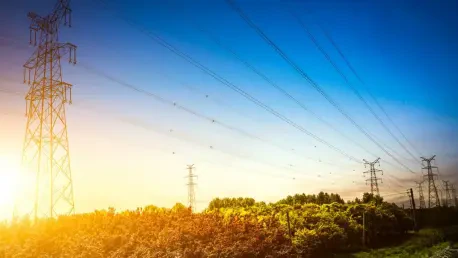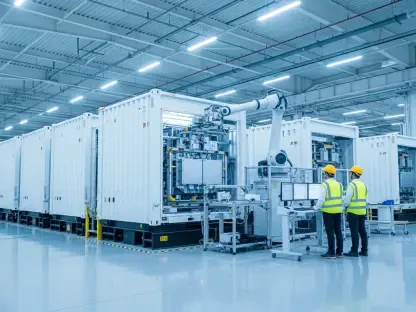In today’s rapidly evolving energy landscape, Christopher Hailstone stands out as a leading force of expertise, especially in the realm of energy management and renewable resources. With his extensive knowledge of grid reliability and security, he sheds light on a groundbreaking partnership between Google and CTC Global. This collaboration aims to transform the energy sector by utilizing advanced conductors to enhance the U.S. power grid, offering the promise of a more resilient and efficient energy future.
Can you explain the main objectives of the partnership between Google and CTC Global?
The main goal of this collaboration is to enhance the U.S. power grid with advanced conductors that carry more power using existing infrastructure, like towers and poles. By targeting the most promising transmission lines for upgrades, this partnership seeks to expedite grid capacity improvements, especially in regions where Google operates data centers, ensuring efficient power distribution while supporting increased demand.
How do advanced conductors differ from standard transmission lines?
Advanced conductors represent a significant evolution from standard lines. They are engineered to handle higher electrical loads without increasing thermal constraints, thanks to innovative materials and design. This allows for increased power flow without the need for new or reinforced structures, making them a smart choice for capacity expansion on existing lines.
What benefits do advanced conductors offer in terms of carrying power?
These conductors provide the ability to transport more electricity across existing lines, thus maximizing use without needing new construction. They are crucial for modernizing the grid to meet growing electricity demands—benefitting areas with increased consumption and supporting more stable and efficient power delivery.
Why are existing towers and poles being utilized for the deployment of advanced conductors?
Utilizing existing infrastructure allows for a faster and more cost-effective upgrade. It minimizes environmental impact and avoids the challenges associated with constructing new facilities, such as securing land rights and permits. This method also reduces operational disruptions since the transition can be smoother compared to complete overhauls.
How does the partnership aim to accelerate grid capacity in the U.S.?
By identifying and prioritizing key transmission lines for enhancement using CTC Global’s conductors, the partnership aims to expand the grid’s capabilities more rapidly. It focuses on areas that will benefit most from increased power supply, aligning efforts with regions vital to Google’s operations to support both immediate and future electricity needs.
What criteria will be used to prioritize the projects that will be undertaken?
Projects anticipated to deliver the most immediate and substantial impact on grid capacity, particularly in regions housing Google’s infrastructure, will likely be prioritized. These projects should align with measurable improvements in power delivery and support local electricity load growth efficiently.
How does this initiative support load growth where Google operates?
This initiative is strategically aligned with Google’s evolving energy needs, essential for their expansive data center operations. By ensuring that power demands are met through enhanced transmission capabilities, this partnership supports sustainable load growth that keeps pace with technological and operational expansions.
Can you elaborate on the role of the Federal Energy Regulatory Commission’s Order 1920 in this context?
Order 1920 mandates that transmission providers consider innovative technologies, such as advanced conductors, in their planning processes. It seeks to identify cost-effective solutions for optimizing existing systems, ensuring infrastructure responds efficiently to current and future energy needs without unnecessary expansion.
What measures are being taken to optimize the transmission system without building new facilities?
The core approach involves utilizing advanced conductors to enhance existing transmission capabilities. This leverages existing poles and towers, optimizing their capacity without requiring the construction of new lines, thus offering an effective increase in electricity flow through current infrastructure.
What kind of responses are you expecting from states, utilities, and transmission developers in the RFI?
We anticipate a proactive response focused on identifying and advancing projects that promise significant improvements in grid reliability and efficiency. Responses may also highlight collaborative opportunities that integrate these advanced technologies into existing systems for enhanced functionality.
What opportunities are provided to selected partners and projects concerning cost assistance?
Selected partners and projects will gain access to financial support designed to offset the costs of upgrading to advanced conductors. This could include funding for purchasing materials, implementing technologies, and training staff to manage these improvements efficiently, ensuring a smoother transition.
Can you discuss the workforce training aspect associated with the deployment of CTC Global’s ACCC conductors?
There is a significant emphasis on training the workforce to skillfully install and manage the new ACCC conductors. This ensures not only proper deployment but also sustained system reliability and efficiency, cultivating a knowledgeable workforce for future advancements in energy technology.
How will technical project studies validate the integration and impact of this technology?
Technical studies play an essential role by providing data-driven assessments of how these advanced conductors perform within the existing grid. These studies will verify improvements in efficiency, reliability, and capacity, offering a clear demonstration of the benefits and integration success of this technology.
In what ways does this partnership contribute to lowering electricity costs and generating economic growth?
By improving transmission efficiency and reducing the need for expansive new constructions, operating costs are lowered. This efficiency translates into reduced electricity costs for consumers, stimulating economic growth through enhanced energy availability and investment in local infrastructure.
How does this collaboration align with advancing U.S. energy dominance?
This initiative positions the U.S. as a leader in adopting cutting-edge energy solutions. By integrating advanced technologies into the national grid, the country reinforces its commitment to energy independence and leadership in global energy innovation, particularly in the face of rising international competition.
How does the partnership help the U.S. maintain leadership in the AI revolution?
A reliable and efficient power supply is critical for driving advancements in AI and other tech sectors. This partnership supports the robust energy infrastructure needed to power AI developments, positioning the U.S. to maintain its competitive edge in this rapidly growing field.
What is your forecast for the future of energy infrastructure and technology in the U.S.?
The future of U.S. energy infrastructure will likely be marked by smart, innovative solutions that optimize existing assets and integrate renewable sources. Advancements in grid technologies will create a more resilient, efficient, and sustainable energy system capable of meeting increasing demands, ultimately ensuring long-term national and economic security.









